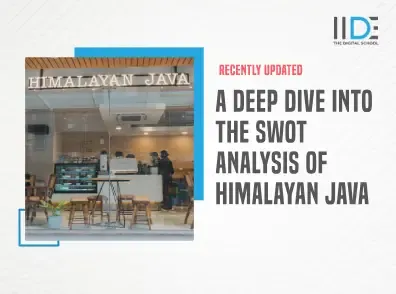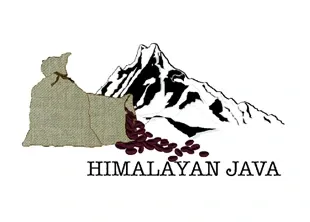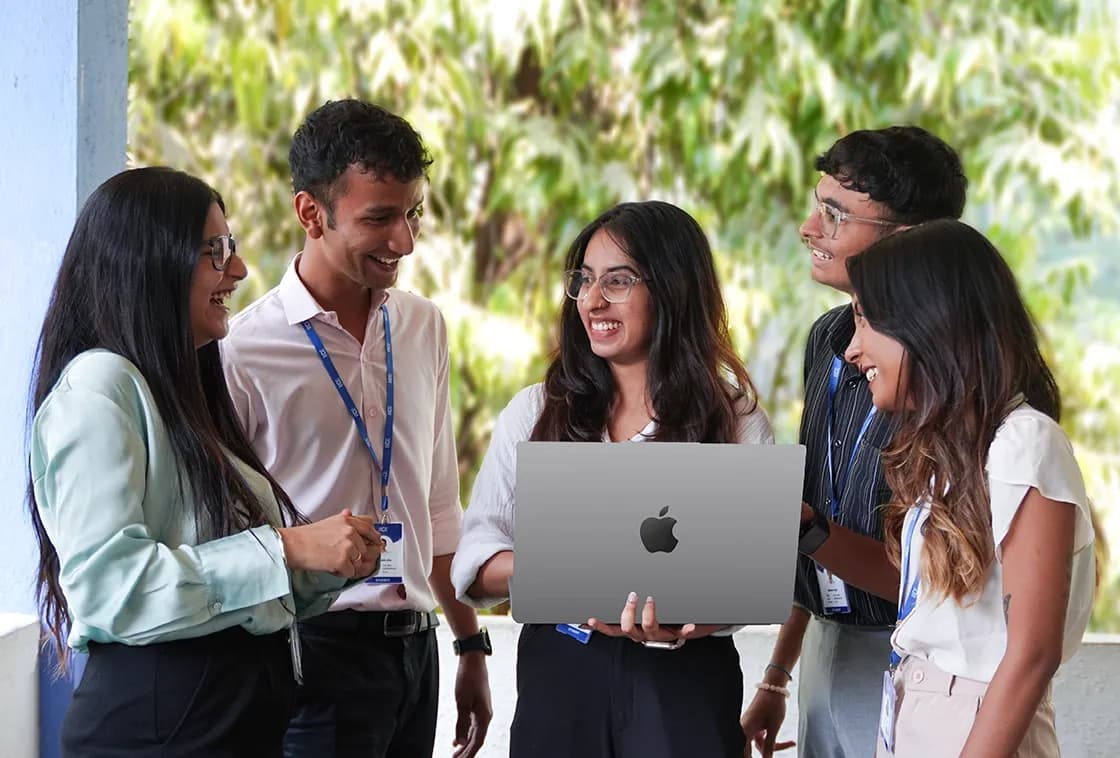
Updated on Apr 14, 2025
|1,933K+ views
The SWOT analysis of Himalayan Java delves into the brand’s solid reputation for premium coffee and its commitment to local sourcing. It also uncovers challenges like rising competition and pricing issues. With opportunities for growth in online sales and international markets, the analysis shows how Himalayan Java can navigate these hurdles to strengthen its position in Nepal’s coffee scene.
Himalayan Java has played a key role in popularizing coffee culture in Nepal. With its focus on high-quality, locally sourced beans, the brand has earned a strong reputation among coffee lovers, offering a unique taste of Nepal’s highlands.
The company’s ability to combine local flavors with international standards has made it a staple in the Nepali coffee scene. To understand its market position and potential, let’s explore the SWOT analysis of Himalayan Java, shedding light on its strengths, challenges, and growth opportunities in a competitive market.
Himalayan Java’s success in building a strong local brand presence demonstrates the power of effective marketing strategies. As businesses continue to grow and evolve, mastering digital tools becomes crucial.
For individual learners, taking an online digital marketing course can enhance their skills, help them understand digital trends, and provide the expertise needed to drive impactful marketing strategies in any business.


Learn Digital Marketing for FREE


About Himalayan Java

Himalayan Java is one of Nepal's most beloved coffee brands, known for its premium coffee beans sourced locally from the country's rich highlands.
Established in the early 1990s, it has grown from a small local coffee shop into a national brand that represents the essence of Nepalese coffee culture. With its commitment to quality and a strong presence in the Nepali market, Himalayan Java is now a familiar name to coffee lovers.
The brand's dedication to offering an authentic coffee experience has set it apart in Nepal's growing coffee industry. From its beans to its brewing methods, Himalayan Java focuses on providing high-quality, freshly brewed coffee, which has garnered a loyal following among Nepali consumers.
As we delve into the swot analysis of Himalayan Java, we gain insights into how the company's strong brand presence, market strategies, and unique offerings have helped it build a lasting reputation in Nepal.
This analysis also uncovers areas for growth and challenges the brand might face in an increasingly competitive market.
SWOT Analysis of Himalayan Java in Nepal
Himalayan Java has become one of the most prominent coffee brands in Nepal, and it is known for its premium quality and sustainable sourcing practices. To understand the company's market position and growth potential, it is essential to look at the SWOT analysis of Himalayan Java, which explores its strengths, weaknesses, opportunities, and threats in the Nepali coffee market.
Strengths
- Strong Brand Presence: Himalayan Java has built a strong reputation in Nepal for offering high-quality, locally sourced coffee beans. This has helped establish a loyal customer base, particularly in urban centers like Kathmandu and Pokhara.
- Commitment to Local Farmers: By sourcing its beans directly from local farmers in Nepal's highlands, Himalayan Java supports sustainable farming practices and ensures that its coffee is fresh and of high quality. This direct relationship with farmers strengthens the brand's connection to the local community.
- Innovative Offerings: The brand offers a wide variety of coffee options, from classic espresso drinks to unique blends, catering to a diverse audience. This innovation allows Himalayan Java to remain relevant to different consumer preferences, from casual drinkers to coffee enthusiasts.
- Cultural Appeal: Himalayan Java stands out by embracing Nepali culture in its branding. This focus on local ingredients and flavors helps the brand connect emotionally with Nepalese consumers, distinguishing it from international coffee chains.
- Expanding Recognition: As one of the top coffee brands in Nepal, Himalayan Java has been able to expand internationally, bringing Nepalese coffee to a global audience. The SWOT analysis of Himalayan Java highlights this successful expansion as a key factor for its future growth.
Weaknesses
- Limited Coffee Culture in Nepal: While coffee consumption is on the rise, Nepal's coffee culture is still in its early stages. This limits the market potential for premium brands like Himalayan Java, especially compared to more established coffee markets worldwide.
- Dependence on Local Sourcing: Sourcing beans locally is a strength, but it also introduces risk. Fluctuations in climate, seasonal changes, or other external factors could affect the supply of high-quality beans, impacting product availability and consistency.
- High Price Point: Himalayan Java's premium coffee is priced higher than many local alternatives, which could limit its appeal to price-sensitive consumers. This pricing strategy might restrict its growth in more price-conscious segments of the market.
- Competition from Global Chains: The entry of global coffee giants like Starbucks into the Nepali market presents a challenge for local brands like Himalayan Java. These international players bring with them larger marketing budgets and a loyal customer base, intensifying the competition.
- Limited Rural Presence: While Himalayan Java has a strong presence in urban areas, its availability in rural regions is still limited. Expanding into rural Nepal could help the brand expand its market share by reaching a larger audience.
Opportunities
- E-Commerce Growth: The rise of e-commerce operations in Nepal presents an opportunity for Himalayan Java to expand its reach. The SWOT analysis of Himalayan Java shows that online platforms could help the brand connect with coffee lovers across the country, even in areas without physical stores.
- Expanding Coffee Culture: As coffee culture grows in Nepal, particularly among younger generations, there's an opportunity for Himalayan Java to introduce new blends and products to capture this emerging market. Engaging with younger, more adventurous consumers could help the brand increase its customer base.
- Health and Wellness Trends: The demand for healthier beverages is rising, and Himalayan Java has a chance to capitalize on this trend by introducing organic, low-sugar, or vegan-friendly coffee options. This important opportunity forms a part of the SWOT analysis of Himalayan Java to cater to health-conscious consumers.
- International Expansion: Himalayan Java's reputation for high-quality coffee makes it well-positioned for further international expansion. Entering new markets could help raise the brand's profile globally, promoting Nepalese coffee on the international stage.
- Strategic Partnerships: Collaborating with local hotels, restaurants, and cafes could boost Himalayan Java's visibility and sales. Partnerships with the hospitality sector would help strengthen its brand presence and increase customer exposure.
Threats
- Economic Downturns: During times of economic instability, consumer spending on luxury items like premium coffee can decrease. This poses a potential threat to Himalayan Java's sales, particularly if consumers shift to more affordable alternatives.
- Competition from Local Brands: As local coffee shops and emerging brands continue to grow in popularity, they pose a challenge to Himalayan Java, especially with their ability to offer competitive pricing and a more personalized experience.
- Changing Consumer Preferences: The growing interest in alternative beverages like tea and soft drinks may impact coffee consumption. The SWOT analysis of Himalayan Java highlights that keeping up with shifting tastes is essential for staying relevant in the market.
- Supply Chain Disruptions: Any disruptions in the coffee bean supply chain, whether due to climate change or logistical issues, could impact Himalayan Java's ability to maintain the consistent quality it's known for.
- Regulatory Changes: New government regulations on imports, taxes, or food safety could create additional operational challenges for Himalayan Java. These changes might increase costs or affect how the brand operates in Nepal's competitive market.
Buyers Persona:

Nisha Sharma
Kathmandu
Occupation: Marketing Executive
Age: 27
Motivations
- High-quality, freshly brewed coffee
- Supporting local businesses and sustainable practices
- Convenience and availability of coffee at multiple locations
Interest & Hobbies
- Socializing with friends at coffee shops
- Traveling and exploring new coffee spots
- Reading, especially books on self-development
- Watching cooking and travel vlogs on YouTube
Pain Points
- Lack of variety in coffee offerings in local cafes
- Inconsistent coffee quality at different outlets
- Limited knowledge of how coffee beans are sourced
- Long wait times during peak hours at cafes
Social Media Presence
- YouTube
Failed Campaign: Himalayan Java’s Momo Move

In an unexpected shift, Himalayan Java added momo to its menu — a move aimed at attracting more footfall and offering "something for everyone" beyond coffee.
Issue: The problem? People go to Himalayan Java for coffee, not dumplings. Loyal customers were confused. It felt off-brand for a café known for premium brews to suddenly serve a dish you’d expect at a local bhatti.
Backlash: The internet didn’t hold back. Social media was filled with posts questioning if Himalayan Java was losing its identity. Some thought it was just a marketing gimmick to pull in crowds, not a thoughtful menu expansion.
Brand’s Response: Himalayan Java didn’t remove the Momo but quietly stopped promoting it. They went back to highlighting their coffee-first image and focused their messaging on quality brews, not side plates. The momo stayed, but in the background.
Top Competitors
Here are five of Himalayan Java's top competitors in Nepal's coffee industry:
- Kar.ma Coffee: Established nearly two decades ago, Kar.ma Coffee sources handpicked, wet-processed beans directly from Nepali farmers and local cooperatives, emphasizing sustainable and ethical practices.
- Dhaulagiri: Launched in 2017, Dhaulagiri operates as both a coffee roaster and supplier, providing premium coffee machines to Nepal's hospitality industry. Their café offers hand-brewed specialty espressos and iced lattes, with a focus on fair trade and sustainability.
- Ananda Tree House: Ananda Tree House combines a café, homestay, and boutique, offering organic coffee and a vegetarian and vegan-friendly menu. The space is designed to promote a peaceful and homely atmosphere, reflecting Nepali culture.
- Coffee Beans Specialty Café: Opened in 2017, this café serves single-origin blends from local roasters, providing outstanding pour-over and Aeropress brews. The bright and contemporary setting also functions as a barista training center.
- Nepal Coffee Company (NCC): Founded in 1983, NCC produces premium, shade-grown, certified organic Arabica coffee from the Himalayan foothills. The company emphasizes sustainability and women's empowerment in its operations.
Want to Know Why 2,50,000+ Students Trust Us?
Dive into the numbers that make us the #1 choice for career success

Courses Recommended for you
Live & Online
Best For
Working Professionals
Mode of Learning
Online
Starts from
Jan 23, 2026
Duration
4-6 Months

Online
Best For
AI Enthusiasts
Mode of Learning
Online
Duration
5 Months

Offline
Best For
12th Passouts
Mode of Learning
On Campus (Mumbai)
Duration
3 Years
Recent Post
The SWOT analysis of Himalayan Java highlights the brand’s strong presence in the Nepali coffee market, its commitment to local sourcing, and the challenges it faces from both local competitors and international coffee chains.
On conducting the SWOT analysis of Himalayan Java, it is revealed that strengths include a solid brand reputation, high-quality locally sourced coffee, and a loyal customer base that values both authenticity and sustainability.
As per the study conducted in the SWOT analysis of Himalayan Java, it points out several growth opportunities, including expanding its online presence, targeting younger consumers, and exploring new international markets.
Based on the SWOT analysis of Himalayan Java, the company faces challenges such as a premium pricing strategy, dependency on local sourcing, and limited availability outside major cities in Nepal.
According to the findings of the SWOT analysis of Himalayan Java, the brand faces threats from economic fluctuations, competition from local coffee shops, and global coffee chains expanding in Nepal.
Based on the SWOT analysis of Himalayan Java's findings, the company can focus on diversifying its product offerings, strengthening its e-commerce presence, and addressing supply chain challenges to maintain a competitive edge.
The SWOT analysis of Himalayan Java provides key insights that can guide the brand's future strategy. By addressing its weaknesses, leveraging opportunities like e-commerce, and responding to market threats, the brand can continue to grow and strengthen its position in the Nepali coffee market.
Aditya Shastri leads the Business Development segment at IIDE and is a seasoned Content Marketing expert. With over a decade of experience, Aditya has trained more than 20,000 students and professionals in digital marketing, collaborating with prestigious institutions and corporations such as Jet Airways, Godrej Professionals, Pfizer, Mahindra Group, Publicis Worldwide, and many others. His ability to simplify complex marketing concepts, combined with his engaging teaching style, has earned him widespread admiration from students and professionals alike.
Aditya has spearheaded IIDE’s B2B growth, forging partnerships with over 40 higher education institutions across India to upskill students in digital marketing and business skills. As a visiting faculty member at top institutions like IIT Bhilai, Mithibai College, Amity University, and SRCC, he continues to influence the next generation of marketers.
Apart from his marketing expertise, Aditya is also a spiritual speaker, often traveling internationally to share insights on spirituality. His unique blend of digital marketing proficiency and spiritual wisdom makes him a highly respected figure in both fields.